 "ttyymmnn" (ttyymmnn)
"ttyymmnn" (ttyymmnn)
08/23/2016 at 12:35 • Filed to: planelopnik, planelopnik history
 8
8
 14
14
 "ttyymmnn" (ttyymmnn)
"ttyymmnn" (ttyymmnn)
08/23/2016 at 12:35 • Filed to: planelopnik, planelopnik history |  8 8
|  14 14 |
Welcome to This Date in Aviation History , getting of you caught up on milestones, important historical events and people in aviation from August 20 - August 23.
!!! UNKNOWN CONTENT TYPE !!!
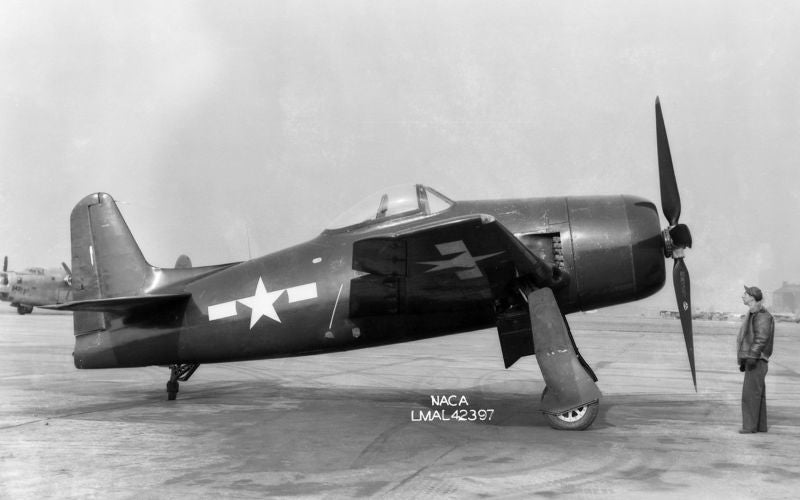
August 21, 1944 – The first flight of the Grumman F8F Bearcat. The Second World War was not only the heyday of the piston-powered military aircraft, it was also the birth of the jet-powered aircraft. But new technologies can be slow to take hold, and while jet power would one day take over military aviation, propeller technology was reaching its zenith, and advanced fighters that had been conceived early in the war were reaching their full potential as the war drew to a close. The Grumman F8F Bearcat, which first came to the drawing board in 1942, would be one of the fastest piston-powered fighters ever built, and the final piston-engined aircraft produced by the storied !!!error: Indecipherable SUB-paragraph formatting!!! corporation. Following the pivotal !!!error: Indecipherable SUB-paragraph formatting!!! in June 1942, Grumman met with veterans of the battle to discuss the future of US Navy fighters. Pilots who fought against the Japanese indicated that what they really desired was an increased rate of climb so they could get their heavier fighters above the more nimble Japanese designs. In order to do that, Grumman designed the smallest possible fighter around the largest possible engine. The new aircraft, originally designated G58, took the same !!!error: Indecipherable SUB-paragraph formatting!!! radial engine that was used in the !!!error: Indecipherable SUB-paragraph formatting!!! , and Grumman engineers began refining the design of the fuselage. They shortened the fuselage by 5 feet and removed the dorsal ridge, giving the new fighter a bubble canopy, the first for a US Navy fighter and a significant improvement in visibility. Thinner wings and flush rivets made the plane lighter and more aerodynamic. Where the Hellcat had a large, 3-bladed propeller, the Bearcat would be given a slightly smaller, 4-bladed propeller. Further weight savings were found by making the wingtips detachable for carrier storage rather than using a folding mechanism, and by reducing the fuel capacity. Thus, the Bearcat proved to be an excellent interceptor, but the Hellcat was still needed for long-range missions. By the time Grumman was finished, the Bearcat was 20% lighter, had a climb rate that was improved by 30%, and, with a top speed of 421 mph, the Bearcat was 30 mph faster than the Hellcat. They also provided the Navy with an extremely powerful fighter that was still small enough to operate from the Navy’s smaller escort carriers that regularly provided air cover for troop landing operations in the Pacific. In October 1944, the Navy placed an order with Grumman for just over 2,000 Bearcats, plus another 1,800 modified aircraft to be built by General Motors. But with the end of the war coming in August 1945, the Grumman order was cut to 770 and the GM order was canceled altogether. Though the first Bearcats were delivered to combat squadrons and were operational in May 1945, the war ended before the F8F ever saw combat.
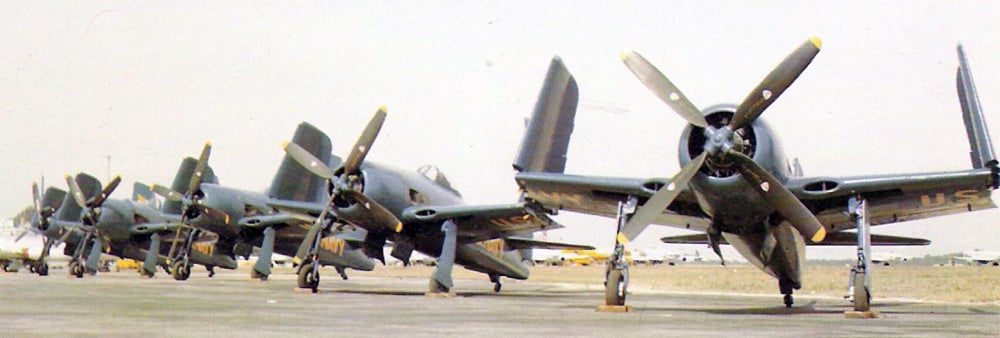
Bearcats of the US Navy’s Blue Angels demonstration squadron
Still, the Bearcat became the principal Navy carrier fighter after WWII and equipped 24 Navy and Marine squadrons. The Bearcat saw its first combat with the French during the !!!error: Indecipherable SUB-paragraph formatting!!! , and a number of fighters were transferred to the Republic of Vietnam, but they were retired in 1963 before seeing extensive action in the Vietnam War. The Bearcat was also the first airplane chosen by the US Navy Blue Angels flight demonstration squadron, and its size and power made it a popular aircraft among air racers after the war. (NASA Photo; US Navy photo)
!!! UNKNOWN CONTENT TYPE !!!
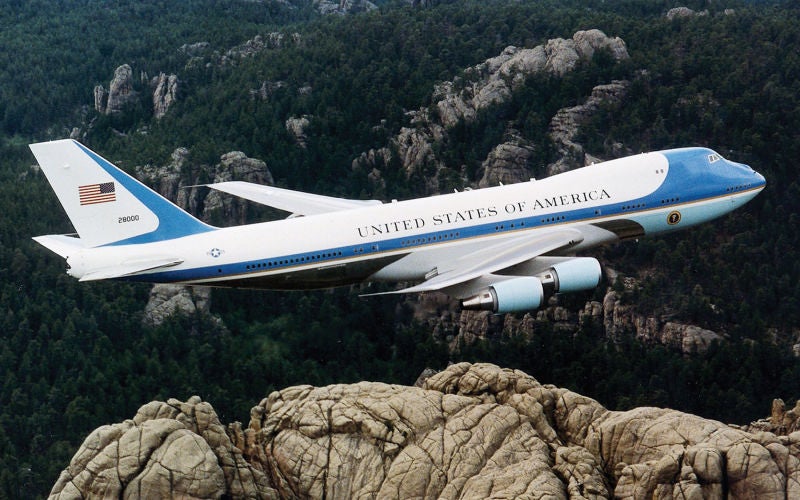
August 23, 1990 – The Boeing VC-25, better known as Air Force One, enters service.
Aircraft that carry world leaders around the world have become an important symbol of national power, pride, and technological development. In 1959, Soviet leader
!!!error: Indecipherable SUB-paragraph formatting!!!
flew to the US in a
!!!error: Indecipherable SUB-paragraph formatting!!!
, a huge 4-engine turboprop airliner, and his arrival caused quite a stir among the western press. The history of American presidential air transport began more out of necessity than propaganda, but the modern symbolism of the US President arriving on a large airliner, decked out in the iconic United States livery designed by
!!!error: Indecipherable SUB-paragraph formatting!!!
, has since become an important part of showing the US flag in foreign countries. American presidential aviation goes back to 1945, when President
!!!error: Indecipherable SUB-paragraph formatting!!!
flew on a
!!!error: Indecipherable SUB-paragraph formatting!!!
, named the
Sacred Cow
, to the
!!!error: Indecipherable SUB-paragraph formatting!!!
. Later, President
!!!error: Indecipherable SUB-paragraph formatting!!!
flew in a
!!!error: Indecipherable SUB-paragraph formatting!!!
(VC-118 Liftmaster) named
Independence
, and President Eisenhower had
Columbine II
and
Columbine III
, both
!!!error: Indecipherable SUB-paragraph formatting!!!
. It was during his administration that the name “Air Force One” came into use, a call sign created in 1953 to indicate any Air Force aircraft that is carrying the president to differentiate it from other civilian aircraft. President
!!!error: Indecipherable SUB-paragraph formatting!!!
brought presidential aviation into the jet age when he ordered three
!!!error: Indecipherable SUB-paragraph formatting!!!
aircraft, based on the
!!!error: Indecipherable SUB-paragraph formatting!!!
, and that aircraft served all the following presidents through
!!!error: Indecipherable SUB-paragraph formatting!!!
. But the
!!!error: Indecipherable SUB-paragraph formatting!!!
we know today from the TV news and in
!!!error: Indecipherable SUB-paragraph formatting!!!
, a
!!!error: Indecipherable SUB-paragraph formatting!!!
(Air Force designation VC-25) didn’t start serving the president until September 1990. In 1985, the Air Force started looking for a replacement for the aging VC-137s currently in service. The new aircraft would have to have at least three engines for added safety and be capable of flying 6,000 miles without refueling. The only two aircraft that fit those criteria were the Boeing 747 and the
!!!error: Indecipherable SUB-paragraph formatting!!!
, and the Air Force chose the 747. President Reagan ordered two aircraft, and rather than modify existing airliners, construction began on two purpose-built aircraft, with interiors designed by First Lady
!!!error: Indecipherable SUB-paragraph formatting!!!
. The first VC-25 took its maiden flight on May 16, 1987, and the first aircraft wasn’t delivered until 1990 during the first administration of
!!!error: Indecipherable SUB-paragraph formatting!!!
. Inside, the VC-25 features a suite of offices and sleeping quarters for the president, as well as other meeting rooms and quarters for the staff. There is also a medical suite, with an operating table, staffed by a doctor and nurse. In addition to transporting the President, Air Force One can also function as a flying military command center in the event of war or other national emergency and, following the
!!!error: Indecipherable SUB-paragraph formatting!!!
of September 11, 2001, the VC-25 was modified to give the President the ability to speak to the entire nation from the air. The VC-25 also has the capability for aerial refueling and is armed with anti-aircraft missile countermeasures, though, as popularly shown in the movie
!!!error: Indecipherable SUB-paragraph formatting!!!
, it does not have a rear cargo ramp. Plans are already in the works for a replacement to the current VC-25, with the Air Force developing a newer
!!!error: Indecipherable SUB-paragraph formatting!!!
which is scheduled to begin operation in 2017.
(US Air Force Photo)
!!! UNKNOWN CONTENT TYPE !!!

August 23, 1954 – The first flight of the Lockheed C-130 Hercules.
The C-13o, in all of its myriad variants, has become a ubiquitous transport and logistics aircraft for the United States military and many partner countries, and has seen action from the
!!!error: Indecipherable SUB-paragraph formatting!!!
to the conflicts of the present day. It has become a true workhorse, tackling jobs from troop transport to logistical support to counterinsurgency to reconnaissance. The Hercules traces its origin back to 1951, when USAF decided to acquire a new turboprop transport for
!!!error: Indecipherable SUB-paragraph formatting!!!
(MATS), later
!!!error: Indecipherable SUB-paragraph formatting!!!
(MAC), when the demands of the Korean War showed that the WWII-era piston-powered airlifters were not up to the task of supplying the troops in the field and were unsuited to modern logistical requirements. But rather than develop a new freighter from an existing aircraft, as they had done in the past, the Air Force requirements called for a completely new plane, designed from the ground up as a heavy lifter. The request from the Air Force led to the creation of the C-130, the
!!!error: Indecipherable SUB-paragraph formatting!!!
(later canceled before any prototypes were built), and the
!!!error: Indecipherable SUB-paragraph formatting!!!
, a plane of similar design yet much larger and built in significantly fewer numbers. The Air Force settled on the C-130, which would be powered by four
!!!error: Indecipherable SUB-paragraph formatting!!!
turboprop engines designed specifically for the Hercules, engines that would give the plane a greater operating range than thirsty turbojet engines and allow the C-130 to operate from rough, unimproved and shorter runways. They also allowed the Hercules to be fully operational with only three engines. The Hercules set a new standard for modern airlift aircraft design, with a fully pressurized cabin. The high wing and external landing gear pods allowed for copious internal cargo space, and a rear cargo door allowed pallets and vehicles to be driven directly on board, with a low deck for ease of loading. After the successful flight of the two prototypes, an initial production contract was awarded in July 1951, and production of the Hercules continues to this day. The C-130 entered service with the US Air Force in 1956, followed by Australia in 1958. The Hercules flew its first combat missions in Vietnam in 1964, and has served in every theater of war since. In 1963, a Hercules set the record for the largest aircraft to land and take off from an aircraft carrier when it carried out trials aboard USS
Forrestal
, a record it holds to this day.
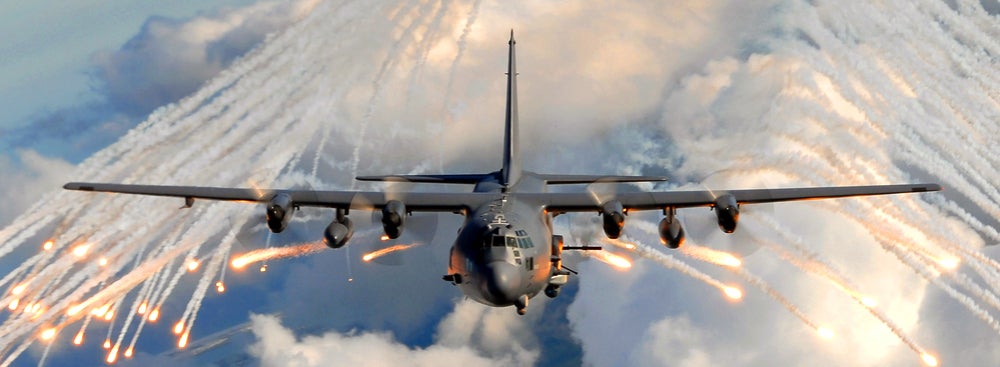
An AC-130U Spooky II releases flares during a training mission
The basic design has led to a more than 40 variants with upgraded engines and avionics for a host of different mission profiles, both military and civilian, including a gunship version, the
!!!error: Indecipherable SUB-paragraph formatting!!!
, which is armed with miniguns and cannons for support of ground troops. It all started with the C-130A, and Lockheed is now producing the C-130J Super Hercules, with the most powerful engines yet, a glass cockpit and modern flight deck. Over 2,500 Herks have been produced, and this 50-year-old design shows no sign of being retired any time soon.
(US Air Force Photo)
!!! UNKNOWN CONTENT TYPE !!!
Short Takeoff
!!! UNKNOWN CONTENT TYPE !!!
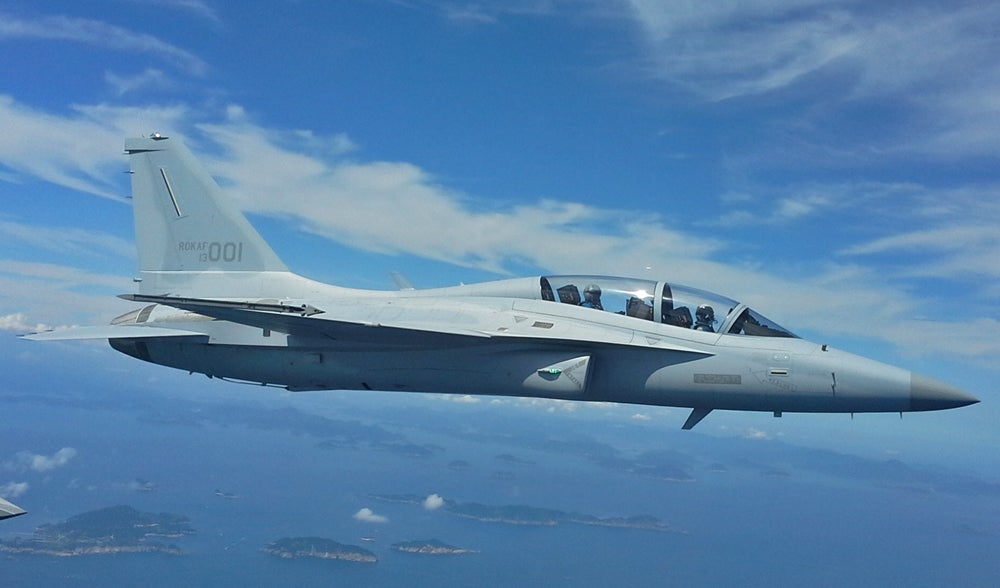
August 20, 2002 – The first flight of the KAI T-50 Golden Eagle, a two-seat supersonic trainer developed in a partnership with !!!error: Indecipherable SUB-paragraph formatting!!! and the first supersonic aircraft developed by South Korea. One of only handful of supersonic trainers, the T-50 entered service with the Republic of Korea Air Force (ROKAF) in 2005 and is currently operated by Korea, Indonesia, Iraq and the Philippines. An armed version has also been developed for light attack, and the T-50 is also being considered for the US Air Force’s !!!error: Indecipherable SUB-paragraph formatting!!! to procure a new trainer to replace the !!!error: Indecipherable SUB-paragraph formatting!!! . (ROKAF photo via !!!error: Indecipherable SUB-paragraph formatting!!! )
!!! UNKNOWN CONTENT TYPE !!!
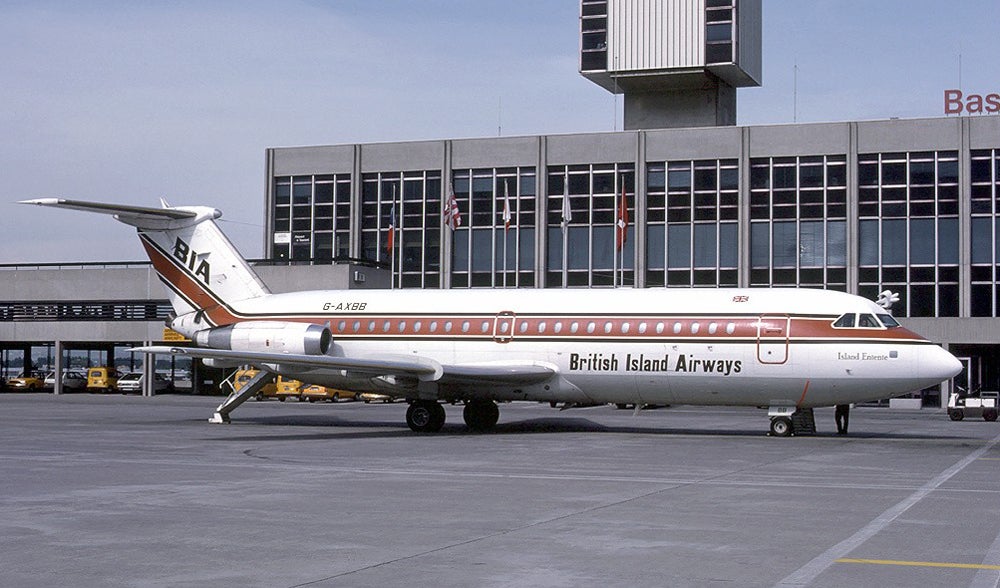
August 20, 1963 – The first flight of the BAC One-Eleven,
a short-range airliner and the second to enter service in Europe following the
!!!error: Indecipherable SUB-paragraph formatting!!!
. Also known as the BAC 111 and the BAC 1-11, the airliner was developed to replace the turboprop-powered
!!!error: Indecipherable SUB-paragraph formatting!!!
, though early sales were dominated by purchases from US carriers. Originally designed to carry 89 passengers, subsequent variants accommodated up to 119 passengers and, with 244 produced in the UK and Romania, it became one of the most successful British airliners of its day.
(Photo by Eduard Marmet via
!!!error: Indecipherable SUB-paragraph formatting!!!
)
!!! UNKNOWN CONTENT TYPE !!!
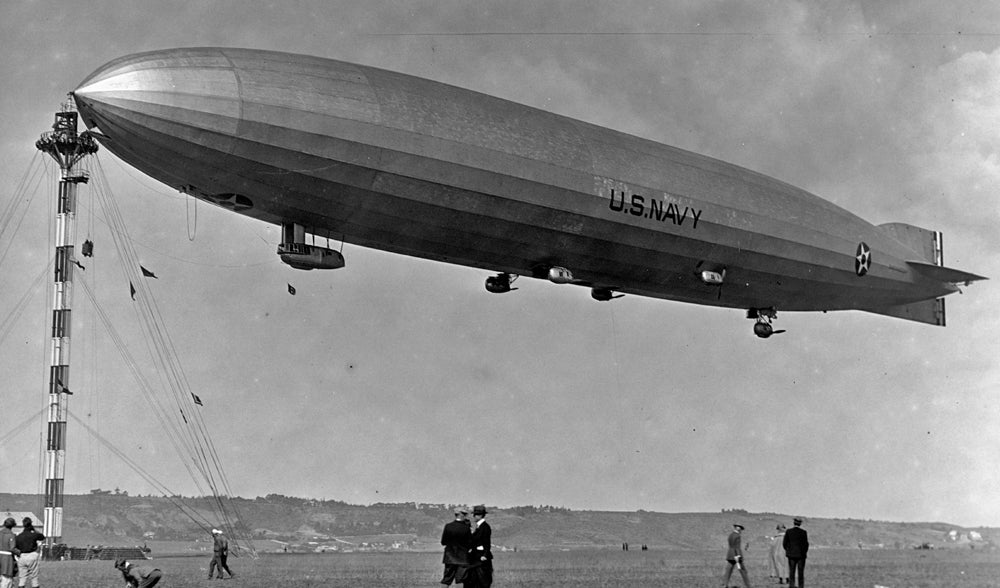
August 20, 1923 – The first flight of the rigid airship USS Shenandoah (ZR-1) , the first of four rigid airships commissioned by the US Navy. Shenandoah was constructed at Lakehurst Naval Air Station in New Jersey and its design was based on the German !!!error: Indecipherable SUB-paragraph formatting!!! LZ-96, and like its German counterpart, Shenandoah was intended for fleet reconnaissance duties. Shenandoah was also the first American airship to cross the Atlantic Ocean, but it was lost on September 2, 1925 during its 57th flight when it was torn apart by a thunderstorm over Ohio, killing 14 members of its 43-man crew. (US Navy photo)
!!! UNKNOWN CONTENT TYPE !!!
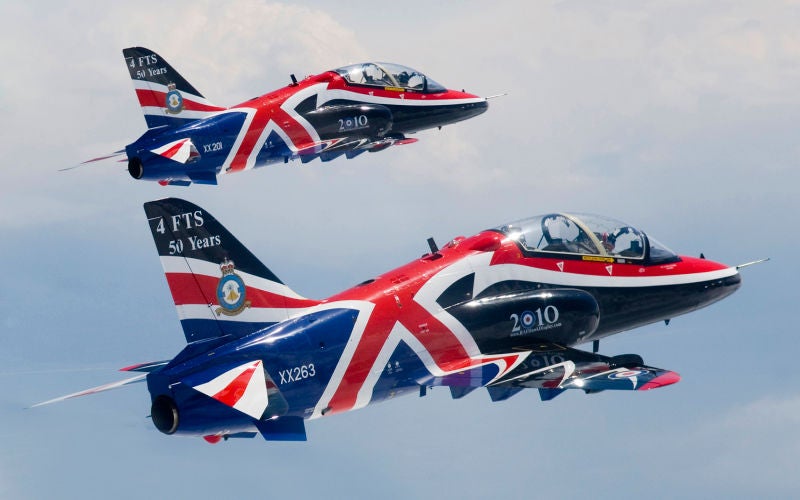
August 21, 1974 – The first flight of the BAE Systems Hawk, a trainer developed by Hawker Siddeley (later British Aerospace) to replace the !!!error: Indecipherable SUB-paragraph formatting!!! , the !!!error: Indecipherable SUB-paragraph formatting!!! and still older !!!error: Indecipherable SUB-paragraph formatting!!! trainers. The aircraft features a low cantilever wing, a single turbojet engine and a tandem cockpit. The rear seat, elevated above the student, provides excellent visibility for the flight instructor, and the single afterburning engine can take the Hawk to Mach 1.5 in a dive. The simplicity of the design also lent itself to numerous upgrades and developments, including a single-seat ground attack variant in which the forward seat is removed and the space filled with avionics, computers, radar, laser rangefinder or forward-looking infrared. Over a 1,000 have been built, and it is currently flown by 13 nations, including the US Navy, where it is known as the T-45 Goshawk. (Photo by Cpl Paul Oldfield/MOD via !!!error: Indecipherable SUB-paragraph formatting!!! )
!!! UNKNOWN CONTENT TYPE !!!
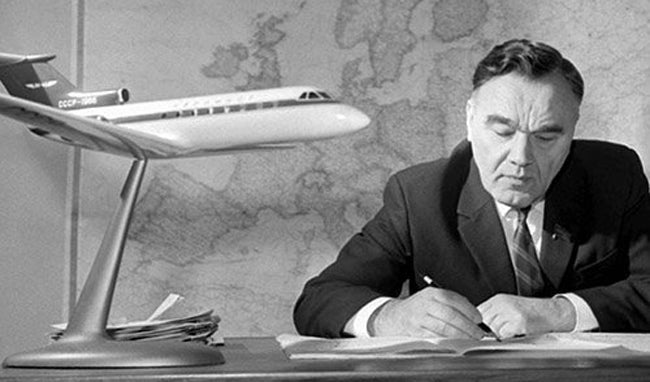
August 22, 1989 – The death of Alexander Yakovlev, a Soviet aeronautical engineer and founder of the Yakovlev Design Bureau, where he served as chief designer until his retirement in 1984. Yakovlev was born in Moscow on April 1, 1906 and began his design work as part of the !!!error: Indecipherable SUB-paragraph formatting!!! . His design bureau produced a large number of fighter aircraft for Russia during WWII, such as the !!!error: Indecipherable SUB-paragraph formatting!!! , !!!error: Indecipherable SUB-paragraph formatting!!! and highly successful !!!error: Indecipherable SUB-paragraph formatting!!! , and served under !!!error: Indecipherable SUB-paragraph formatting!!! as Vice-Minister of Russia’s Aviation Industry until 1946. He also designed Russia’s first jet powered fighter, the !!!error: Indecipherable SUB-paragraph formatting!!! . (Photo author unknown)
!!! UNKNOWN CONTENT TYPE !!!

August 22, 1980 – The death of James McDonnell. Born on April 9, 1899 in Denver Colorado, McDonnell was one of America’s great aviation pioneers and aircraft producers. He began his design career in 1928, setting up J.S. McDonnell & Associates where he designed his first aircraft. In 1938, he founded the !!!error: Indecipherable SUB-paragraph formatting!!! and provided the US with some of its most iconic military aircraft, including the !!!error: Indecipherable SUB-paragraph formatting!!! , the US Navy’s first purely jet-powered fighter, and the !!!error: Indecipherable SUB-paragraph formatting!!! , one of the era’s greatest all-weather naval fighter interceptors. His company also built the !!!error: Indecipherable SUB-paragraph formatting!!! and !!!error: Indecipherable SUB-paragraph formatting!!! space capsules. In 1967, his company merged with Douglas Aviation to form McDonnell Douglas, and they would go on to create still more great aircraft, such as the !!!error: Indecipherable SUB-paragraph formatting!!! airliner and the !!!error: Indecipherable SUB-paragraph formatting!!! . McDonnell was awarded the !!!error: Indecipherable SUB-paragraph formatting!!! in 1980. (McDonnell photo via !!!error: Indecipherable SUB-paragraph formatting!!! ; F-4 photo via US Navy; F-15 photo via US Air Force)
!!! UNKNOWN CONTENT TYPE !!!
Recent Aviation History Posts
!!! UNKNOWN CONTENT TYPE !!!
!!! UNKNOWN CONTENT TYPE !!!
!!! UNKNOWN CONTENT TYPE !!!
!!! UNKNOWN CONTENT TYPE !!!
!!! UNKNOWN CONTENT TYPE !!!
If you enjoy these Aviation History posts, please let me know in the comments. And if you missed any of the past articles, you can find them all at
!!!error: Indecipherable SUB-paragraph formatting!!!
.
!!! UNKNOWN CONTENT TYPE !!!
 RamblinRover Luxury-Yacht
> ttyymmnn
RamblinRover Luxury-Yacht
> ttyymmnn
08/23/2016 at 12:52 |
|
On the Shenandoah , it’s really quite remarkable how bad the US’ luck with rigid airships was. The Shenandoah , the Macon, the Akron... all storm casualties.
On the Bearcat, it was without question one of the best prop platforms of all time. Given that
Rare Bear
broke in 1972 a time-to-climb record that had stood since ‘46... set by a stock Bearcat...
 Smallbear wants a modern Syclone, local Maple Leafs spammer
> ttyymmnn
Smallbear wants a modern Syclone, local Maple Leafs spammer
> ttyymmnn
08/23/2016 at 12:53 |
|
Completely unrelated, but I found this last week and thought you might like it. Spot the issue?
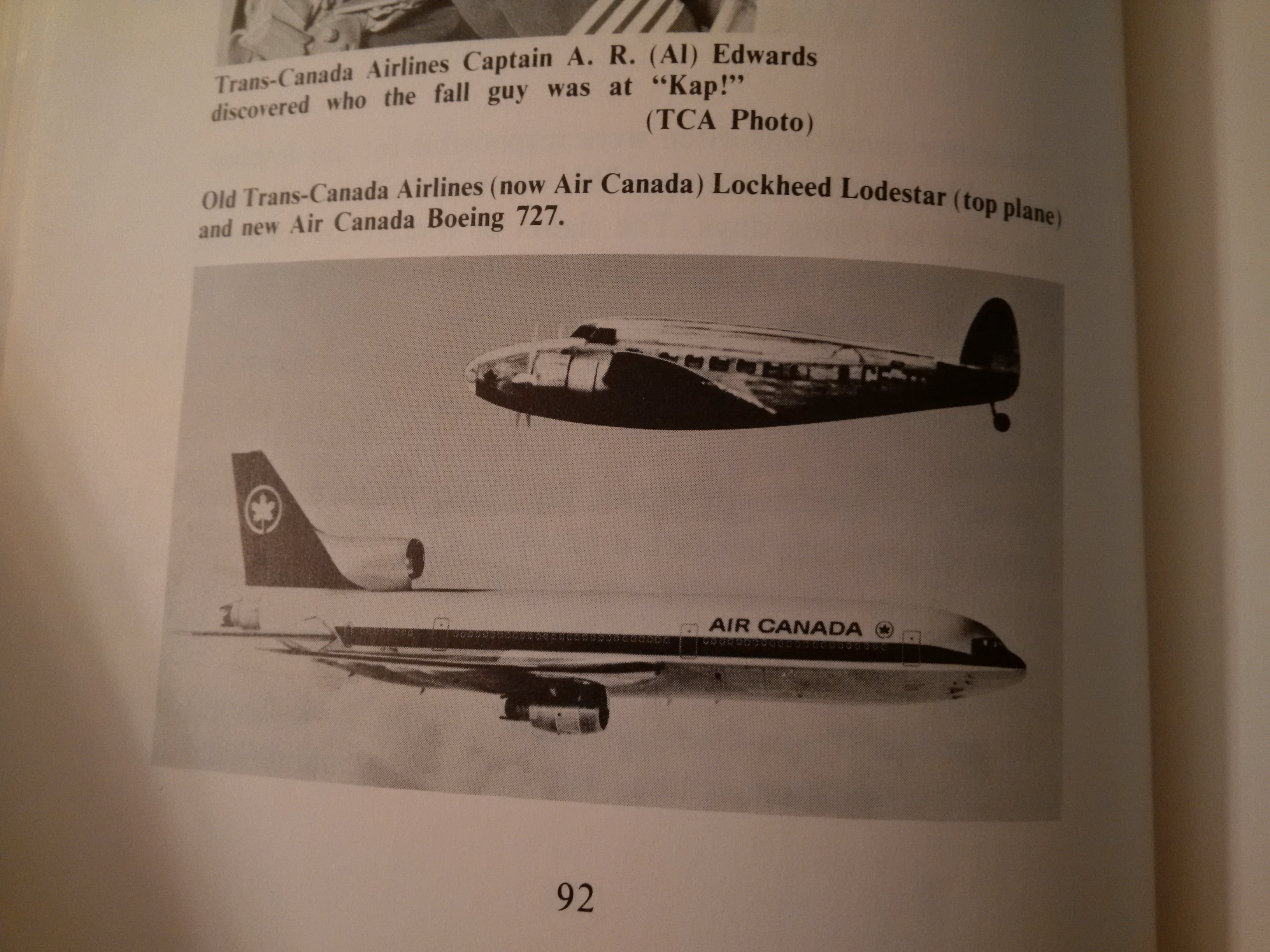
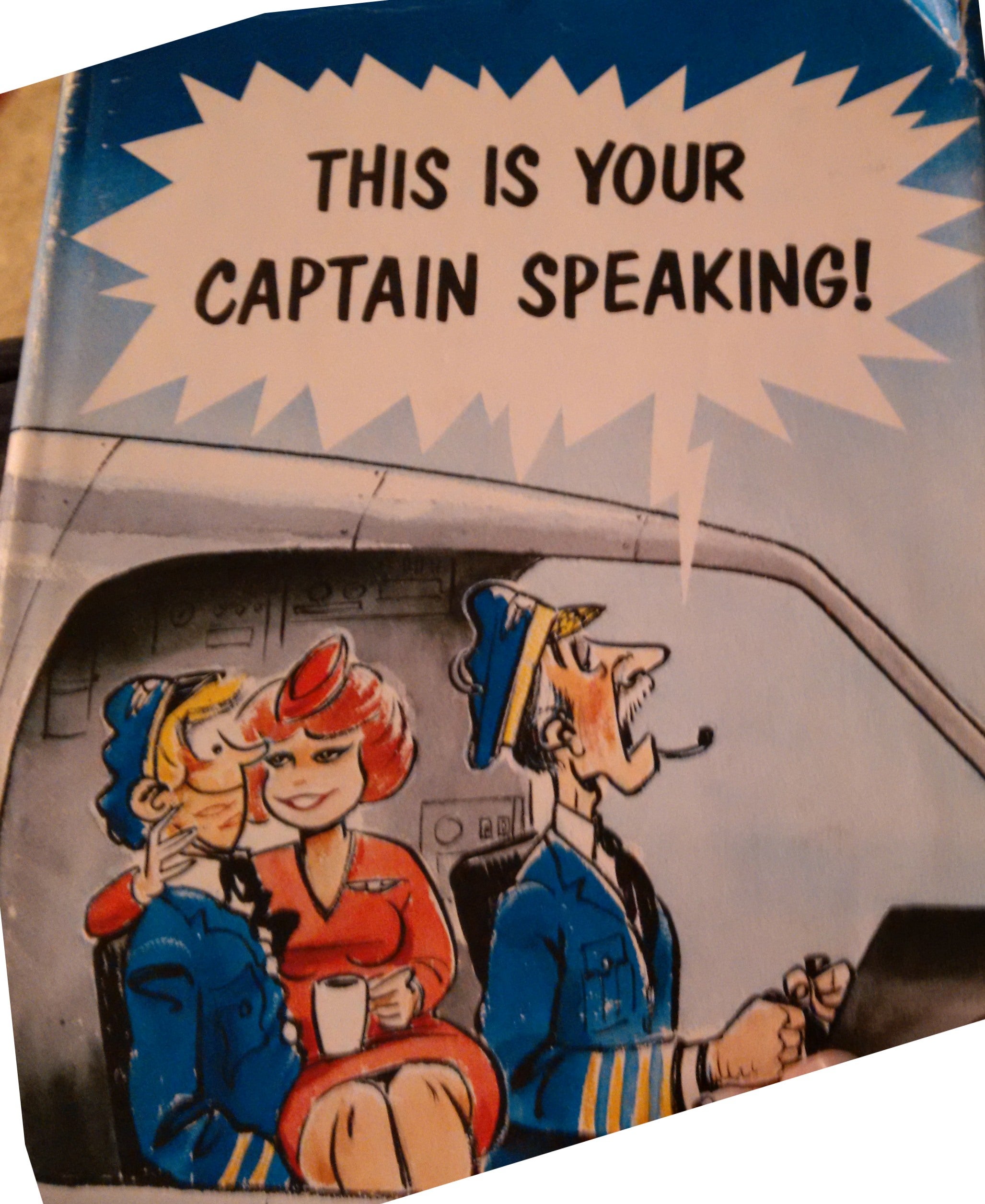
 phenotyp
> ttyymmnn
phenotyp
> ttyymmnn
08/23/2016 at 12:54 |
|
Always thought the Hawk was such a pretty little plane. Thanks for reminding me of it!
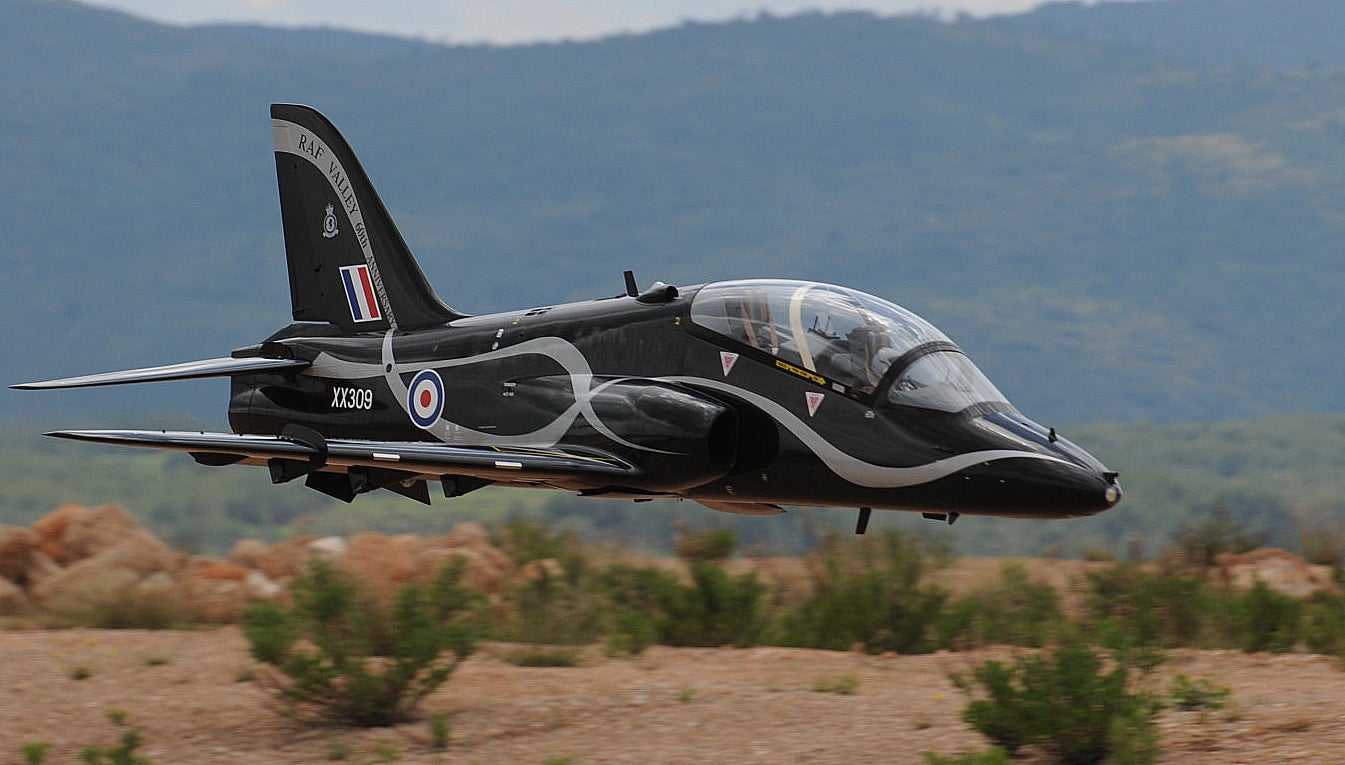
 Turbineguy: Nom de Zoom
> Smallbear wants a modern Syclone, local Maple Leafs spammer
Turbineguy: Nom de Zoom
> Smallbear wants a modern Syclone, local Maple Leafs spammer
08/23/2016 at 13:02 |
|
The bottom a/c is not a 727 but an L-1011.
 Turbineguy: Nom de Zoom
> ttyymmnn
Turbineguy: Nom de Zoom
> ttyymmnn
08/23/2016 at 13:05 |
|
One thing about the Bearcat I always found odd was the flat prop hub. (no spinner) I assume this is because it has an electric prop and not hydraulic?
 Smallbear wants a modern Syclone, local Maple Leafs spammer
> Turbineguy: Nom de Zoom
Smallbear wants a modern Syclone, local Maple Leafs spammer
> Turbineguy: Nom de Zoom
08/23/2016 at 13:11 |
|
Yup.
 MonkeePuzzle
> phenotyp
MonkeePuzzle
> phenotyp
08/23/2016 at 13:14 |
|
more planes should be black!
 phenotyp
> MonkeePuzzle
phenotyp
> MonkeePuzzle
08/23/2016 at 13:28 |
|
SAY WORD
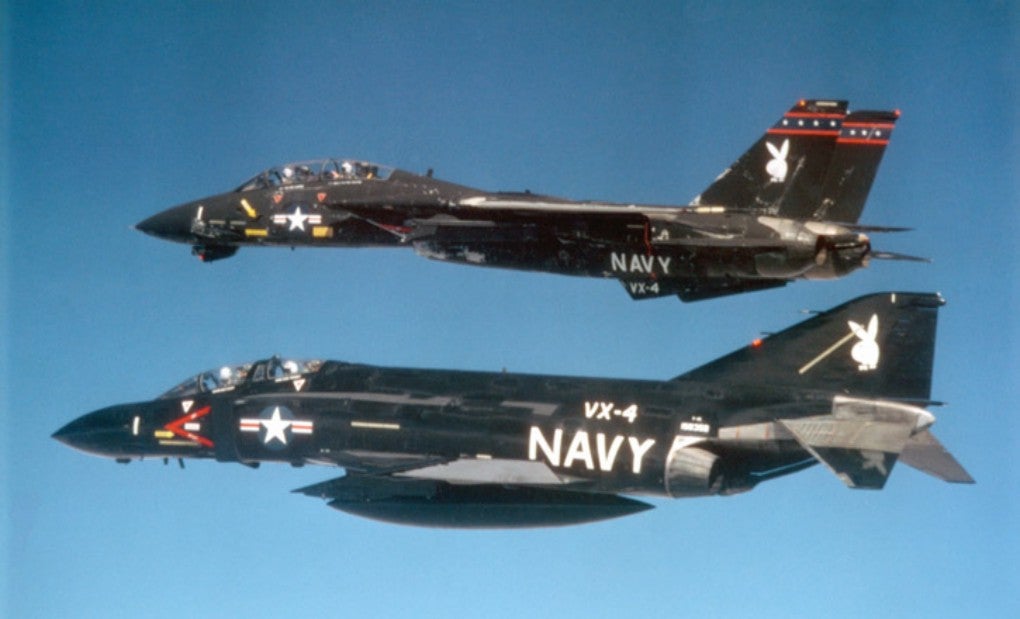
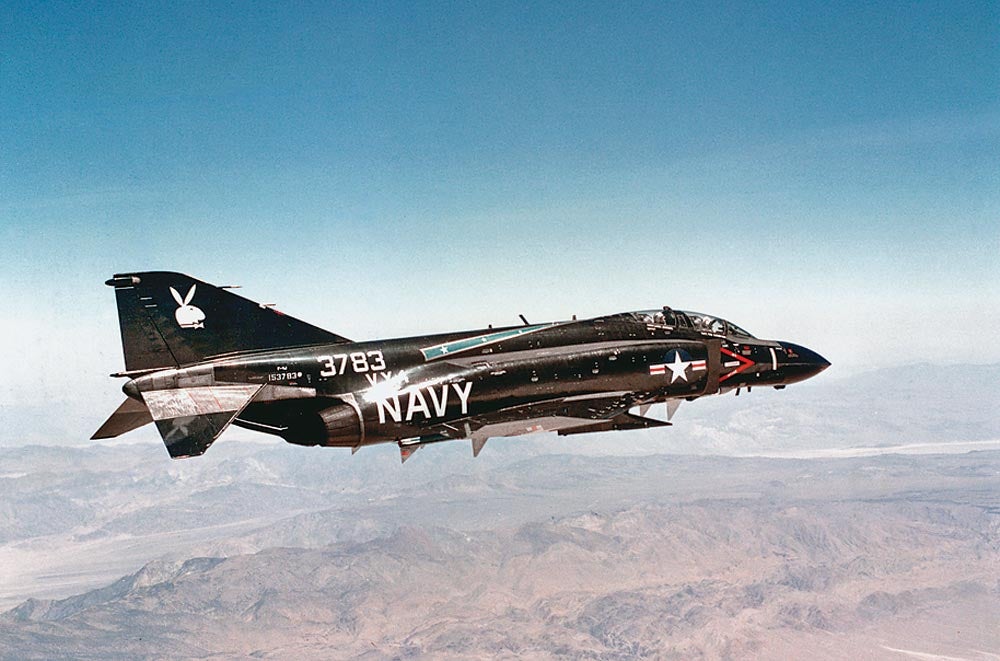
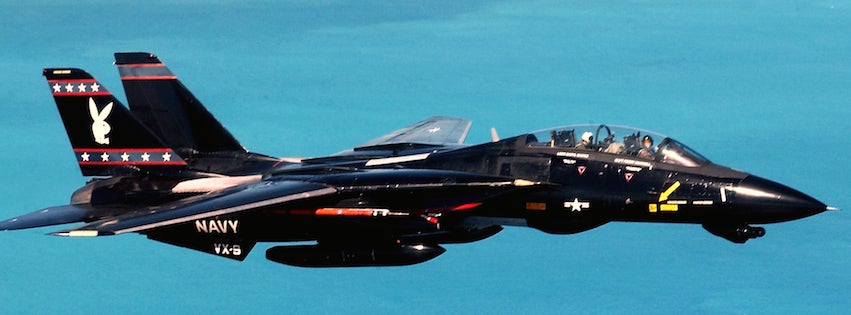
 ttyymmnn
> Smallbear wants a modern Syclone, local Maple Leafs spammer
ttyymmnn
> Smallbear wants a modern Syclone, local Maple Leafs spammer
08/23/2016 at 17:43 |
|

 ttyymmnn
> Turbineguy: Nom de Zoom
ttyymmnn
> Turbineguy: Nom de Zoom
08/23/2016 at 17:43 |
|
I have no idea, honestly. It might also have something to do with engine cooling.
 special_k_side
> ttyymmnn
special_k_side
> ttyymmnn
08/23/2016 at 18:03 |
|
Shhhh, your knob got misplaced. “where it is knob as the T-45"
Great post!
 ttyymmnn
> special_k_side
ttyymmnn
> special_k_side
08/23/2016 at 18:06 |
|
D’oh! Thanks. I was pretty sleepy last night when I was proofing.
 special_k_side
> ttyymmnn
special_k_side
> ttyymmnn
08/23/2016 at 20:38 |
|
No worries, not a grammar Nazi, but was chuckling as I did the same thing a few weeks ago posting to an automotive forum. Axle grease, greasy hands, dirty keyboard attached to garage computer, and a few lights dead make this happen for me. WRITE ON! And thanks again, great read!
 ttyymmnn
> special_k_side
ttyymmnn
> special_k_side
08/23/2016 at 20:43 |
|
I never get upset by corrections, either of typos or of information. There are a lot of words to keep straight in these posts, and you can't always trust autocorrect. Thanks for reading.